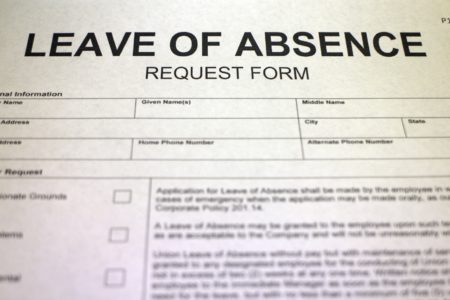
Employees may be waiving their FMLA rights by requesting additional leave at the end of their statutorily-mandated 12-week period. See Jones v. Gulf Coast Health Care of De., 854 F.3d 1261 (11th Cir. 2017). Rodney Jones was an activities director at a nursing home who underwent rotator cuff surgery. His employer had a policy requiring a fitness-for-duty certification before returning from FMLA leave. When Mr. Jones was not medically cleared at the end of his FMLA 12-week period, he requested, and received, an additional 30 days of leave. While on that extended leave, he visited Busch Gardens theme park twice, and vacationed in St. Martin. Upon returning to work Mr. Jones was terminated because his employer believed he was well-enough to work at an earlier point.
The Jones case actually discusses several issues of significance for employers and employees under the FMLA.
Waiver of Rights by Requesting Additional Leave
Mr. Jones’s employer gave him an additional 30-days of leave, but “[s]ignificantly, this additional leave was not an extension of Jones’s FMLA leave.” The Eleventh Circuit stopped just short of announcing a concrete rule on waiver. Nevertheless, the Court is clearly learning towards such a rule: “Relevant caselaw suggests that an employer does not interfere with an employee’s right to reinstatement if that employee is terminated after taking leave in a excess of the 12 weeks permitted by the FMLA.” The Court found that “Jones likely waived his FMLA right to reinstatement by taking an additional 30 days of medical leave ….” Nevertheless, the Court found other reasons to uphold the termination.
Fitness for Duty
“[A]n employee returning from FMLA leave who cannot perform the essential functions of his job due to a physical condition need not be reinstated or restored to another position.” Moreover, an employer may lawfully condition reinstatement upon receipt of a fitness-for-duty certification from a physician. But, the employer must have a uniformly-applied fitness-for-duty policy.
Mr. Jones argued that his employer did not have a uniformly applied policy, because it allowed other employees to return on light duty, but not him. The Eleventh Circuit rejected that argument and placed significant limits on the ability of employees to compare themselves to others. The Court found that comparator employees must be “similarly situated.” And, the employees that Jones compared himself to were not similarly situated because they: (1) held different jobs with different duties; and, (2) were recovering from different maladies.
Retaliation – Time Limits for Causation
While the Eleventh Circuit’s decision with regard to reinstatement significantly limits employees’ rights, another part of the Jones opinion helps employees asserting retaliation. Jones claimed that his termination was not related to his vacations, but was retaliation for seeking FMLA leave. A retaliation claim requires proof that termination was caused by a request for FMLA leave. The most frequent way to prove causation is through temporal proximity — a short period of time between assertion of FMLA rights and retaliation. In the Eleventh Circuit, a period of two or three months between assertion of rights and termination usually satisfies the temporal proximity requirement.
Before Jones, Eleventh Circuit courts were split on whether the time limits for causation begin at the beginning or at the end of the FMLA leave. Remember, FMLA leave is essentially three months of leave. In Mr. Jones’s case, he was fired four months after requesting FMLA leave, but only one month after the end of his FMLA leave.
The trial court found that Mr. Jones’s time began running from the beginning of his request for FMLA leave, and that a delay of four months for termination was too long to establish causation. The Eleventh Circuit reversed that decision and established a new rule for retaliation claims: temporal proximity “should be measured from the last day of an employee’s FMLA leave until the adverse action at issue occurs.” Because only one month passed from the last day of Jones’s FMLA leave to his termination, the Court reversed dismissal of his retaliation claim.
In summary, Jones is a good news/bad news case for employers. On the one hand, the Eleventh Circuit made it more difficult for employees to assert claims for interference with FMLA rights. On the other hand, the Court made it easier to prevail on retaliation claims.